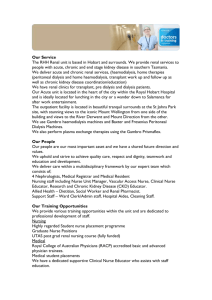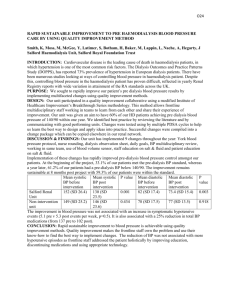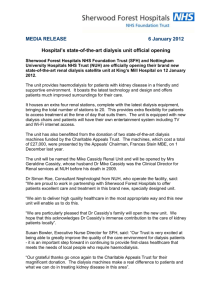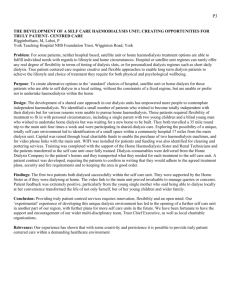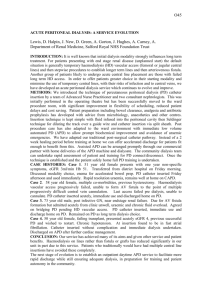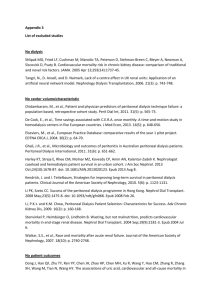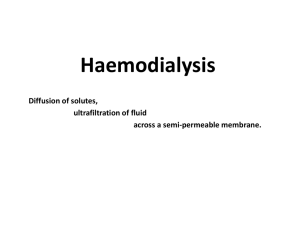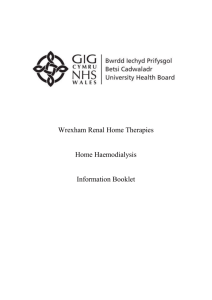P137 What are the Current Patient Safety Issues in Dialysis
advertisement
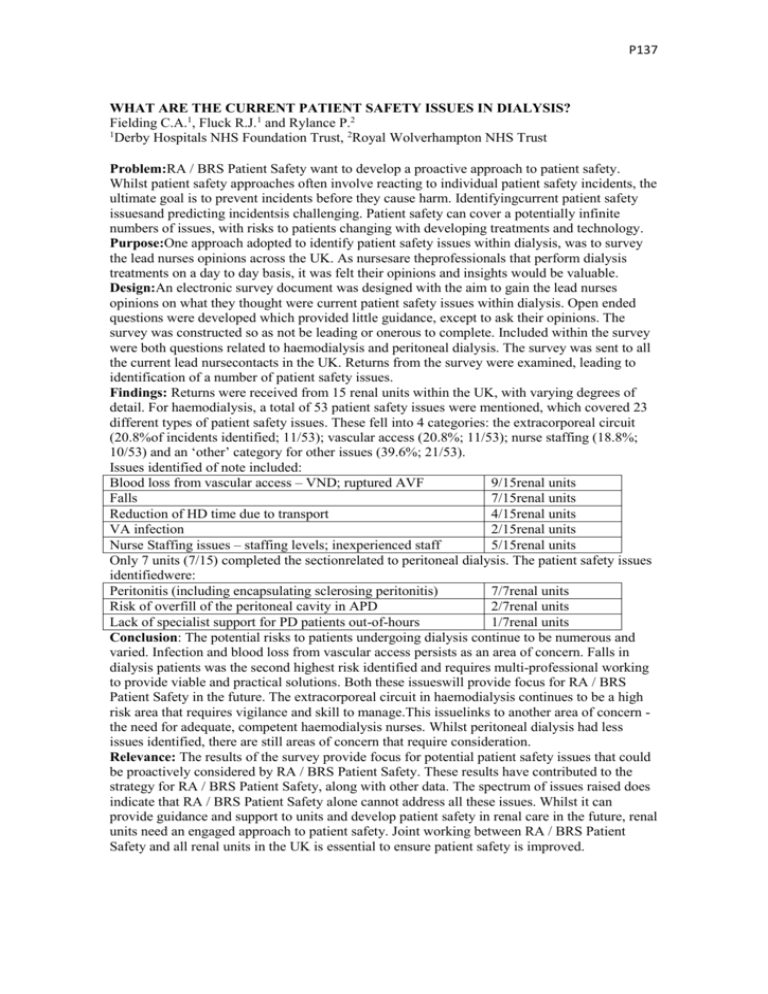
P137 WHAT ARE THE CURRENT PATIENT SAFETY ISSUES IN DIALYSIS? Fielding C.A.1, Fluck R.J.1 and Rylance P.2 1 Derby Hospitals NHS Foundation Trust, 2Royal Wolverhampton NHS Trust Problem:RA / BRS Patient Safety want to develop a proactive approach to patient safety. Whilst patient safety approaches often involve reacting to individual patient safety incidents, the ultimate goal is to prevent incidents before they cause harm. Identifyingcurrent patient safety issuesand predicting incidentsis challenging. Patient safety can cover a potentially infinite numbers of issues, with risks to patients changing with developing treatments and technology. Purpose:One approach adopted to identify patient safety issues within dialysis, was to survey the lead nurses opinions across the UK. As nursesare theprofessionals that perform dialysis treatments on a day to day basis, it was felt their opinions and insights would be valuable. Design:An electronic survey document was designed with the aim to gain the lead nurses opinions on what they thought were current patient safety issues within dialysis. Open ended questions were developed which provided little guidance, except to ask their opinions. The survey was constructed so as not be leading or onerous to complete. Included within the survey were both questions related to haemodialysis and peritoneal dialysis. The survey was sent to all the current lead nursecontacts in the UK. Returns from the survey were examined, leading to identification of a number of patient safety issues. Findings: Returns were received from 15 renal units within the UK, with varying degrees of detail. For haemodialysis, a total of 53 patient safety issues were mentioned, which covered 23 different types of patient safety issues. These fell into 4 categories: the extracorporeal circuit (20.8%of incidents identified; 11/53); vascular access (20.8%; 11/53); nurse staffing (18.8%; 10/53) and an ‘other’ category for other issues (39.6%; 21/53). Issues identified of note included: Blood loss from vascular access – VND; ruptured AVF 9/15renal units Falls 7/15renal units Reduction of HD time due to transport 4/15renal units VA infection 2/15renal units Nurse Staffing issues – staffing levels; inexperienced staff 5/15renal units Only 7 units (7/15) completed the sectionrelated to peritoneal dialysis. The patient safety issues identifiedwere: Peritonitis (including encapsulating sclerosing peritonitis) 7/7renal units Risk of overfill of the peritoneal cavity in APD 2/7renal units Lack of specialist support for PD patients out-of-hours 1/7renal units Conclusion: The potential risks to patients undergoing dialysis continue to be numerous and varied. Infection and blood loss from vascular access persists as an area of concern. Falls in dialysis patients was the second highest risk identified and requires multi-professional working to provide viable and practical solutions. Both these issueswill provide focus for RA / BRS Patient Safety in the future. The extracorporeal circuit in haemodialysis continues to be a high risk area that requires vigilance and skill to manage.This issuelinks to another area of concern the need for adequate, competent haemodialysis nurses. Whilst peritoneal dialysis had less issues identified, there are still areas of concern that require consideration. Relevance: The results of the survey provide focus for potential patient safety issues that could be proactively considered by RA / BRS Patient Safety. These results have contributed to the strategy for RA / BRS Patient Safety, along with other data. The spectrum of issues raised does indicate that RA / BRS Patient Safety alone cannot address all these issues. Whilst it can provide guidance and support to units and develop patient safety in renal care in the future, renal units need an engaged approach to patient safety. Joint working between RA / BRS Patient Safety and all renal units in the UK is essential to ensure patient safety is improved.
